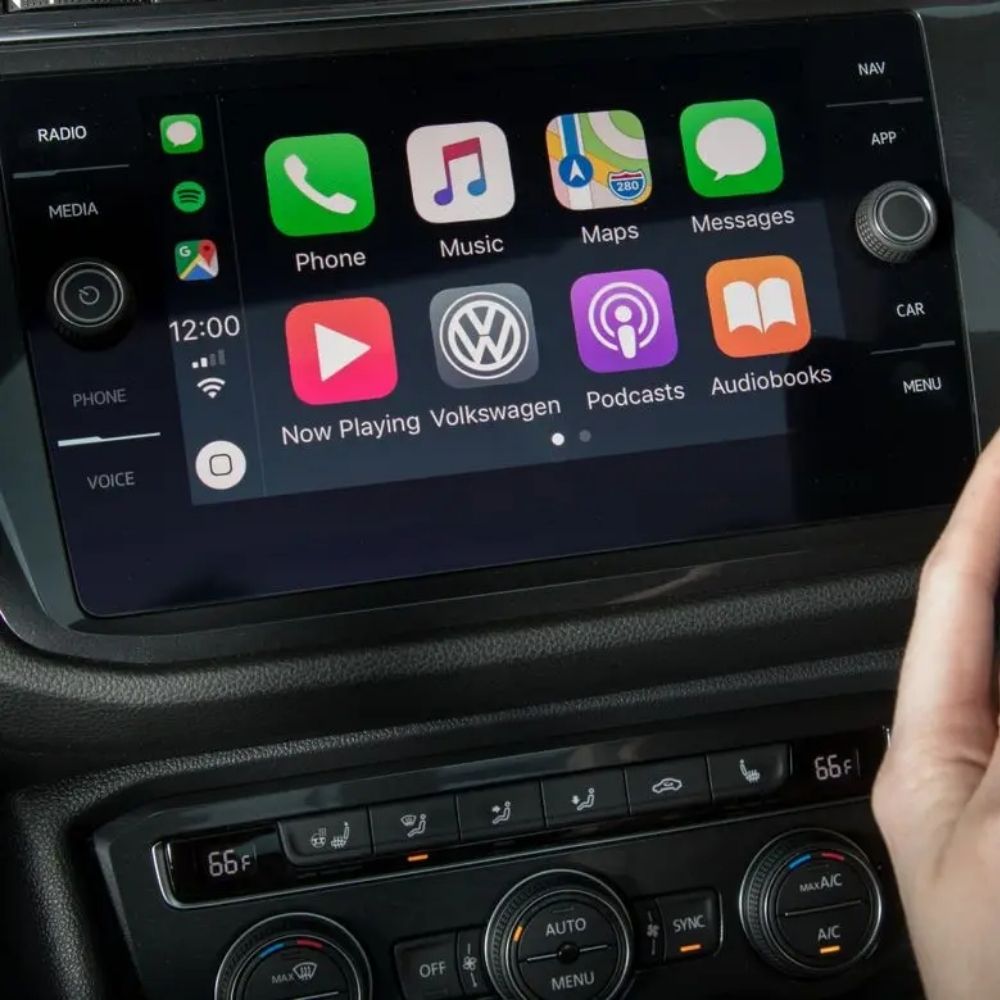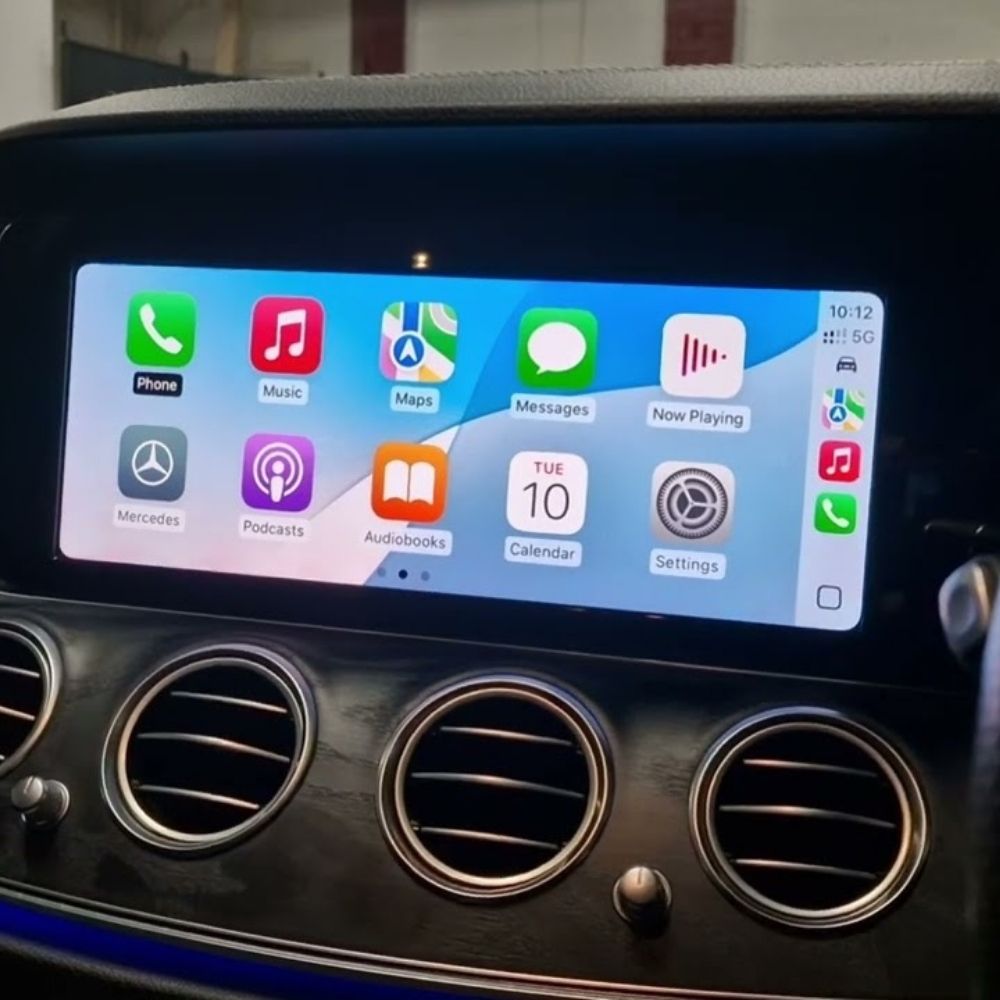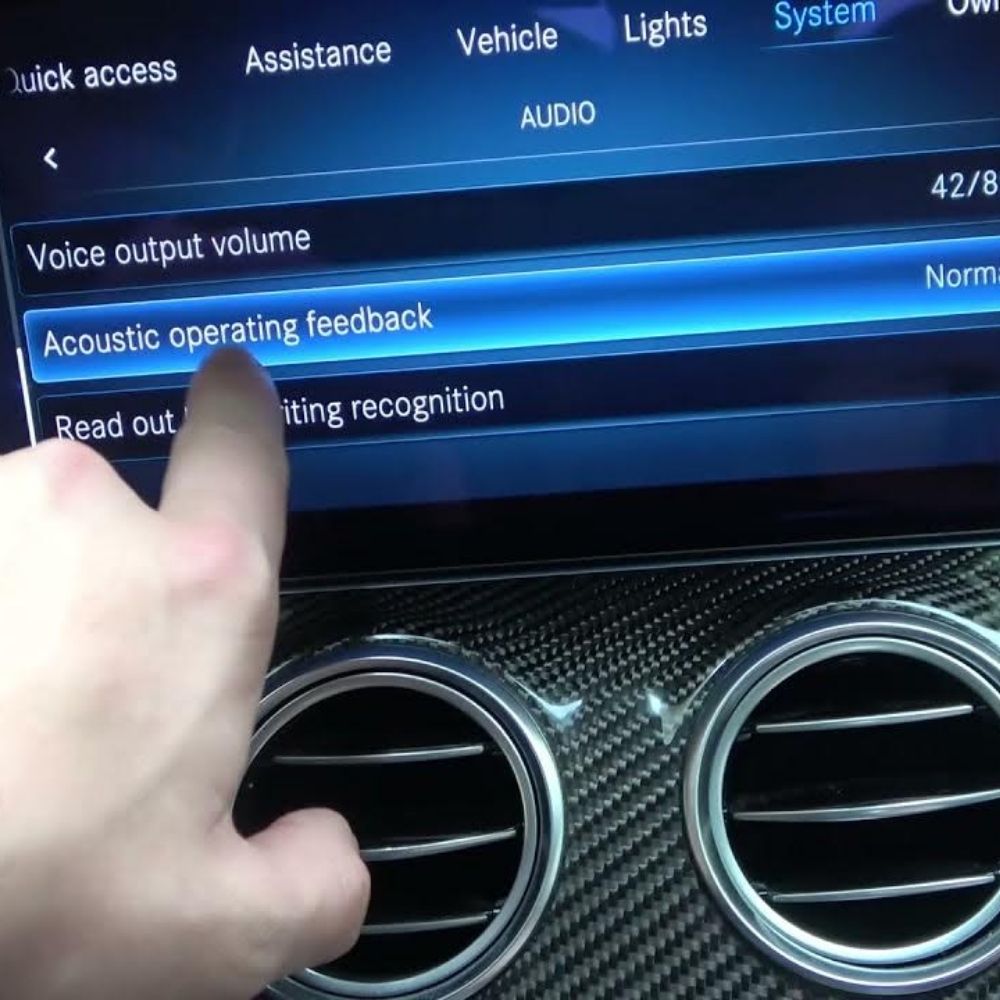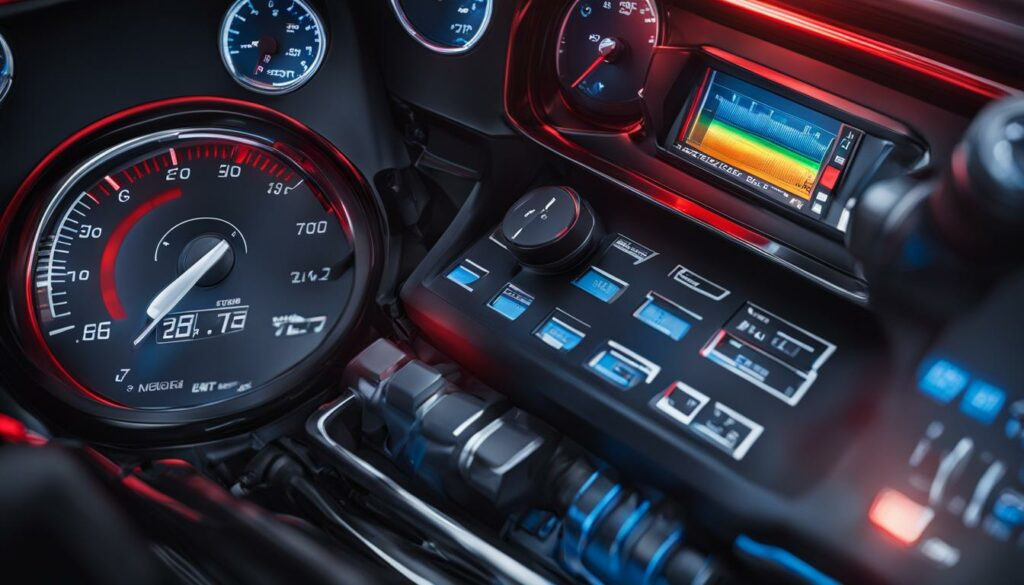

Audi A4 Trouble Code 00779: Causes, Symptoms, and Solutions
Contents
- 1. Understanding Audi A4 Trouble Code 00779
- 1.1. Function of the Steering Angle Sensor (G85)
- 1.2. Symptoms Associated with Code 00779
- 1.3. Potential Causes of the 00779 Error
- 2. Diagnosing the 00779 Code in Your Audi A4
- 2.1. Essential Tools for Diagnosis
- 2.2. Step-by-Step Diagnostic Procedure
- 2.3. Interpreting Diagnostic Results
- 3. Resolving the Audi A4 Trouble Code 00779
- 3.1. Common Repair Procedures
- 3.2. Step-by-Step Repair Guide
- 3.3. Calibration and Programming
- 4. Preventing Future Issues with the Steering Angle Sensor
- 4.1. Regular Maintenance Tips
- 4.2. Driving Habits to Protect the Sensor
- 4.3. Recognizing Early Warning Signs
- 5. The Benefits of Professional Coding and Programming Services
- 5.1. Expertise and Specialized Tools
- 5.2. Ensuring Accurate Calibration
- 5.3. Resolving Complex Software Issues
- 6. AutoExplain: Your Partner in Automotive Solutions
- 6.1. Remote Diagnostics and Programming Services
- 6.2. Benefits of Choosing AutoExplain
- 6.3. Contact Information and Support
- 7. FAQ: Audi A4 Trouble Code 00779
- 7.1. What does the Audi A4 trouble code 00779 mean?
- 7.2. What are the common symptoms of the 00779 code?
- 7.3. What are the potential causes of the 00779 error?
- 7.4. Can I fix the 00779 code myself?
- 7.5. How important is the steering angle sensor for my Audi A4?
- 7.6. What is involved in calibrating the steering angle sensor?
- 7.7. How can AutoExplain help with the 00779 code?
- 7.8. What should I do if the 00779 code returns after repair?
- 7.9. Are there any driving habits that can affect the steering angle sensor?
- 7.10. How often should I have my wheel alignment checked?
- 8. Conclusion: Taking the Next Steps with AutoExplain
The Audi A4 Trouble Code 00779 indicates a malfunction in the steering angle sensor (G85). AutoExplain is here to guide you through understanding, diagnosing, and resolving this issue. Addressing it promptly ensures vehicle safety and optimal performance and with AutoExplain’s remote diagnostic and programming services, you can quickly resolve this problem.
1. Understanding Audi A4 Trouble Code 00779
What does the Audi A4 trouble code 00779 signify? The trouble code 00779 in an Audi A4 indicates an issue with the steering angle sensor (SAS), also known as G85. This sensor is a crucial component of the Electronic Stability Program (ESP) and other advanced driver-assistance systems (ADAS). The SAS monitors the steering wheel’s position and rate of turn, providing essential data to the vehicle’s computer for functions like stability control, traction control, and adaptive lighting. When the SAS malfunctions, it can trigger the 00779 code and compromise the performance of these safety systems.
1.1. Function of the Steering Angle Sensor (G85)
The steering angle sensor (SAS), or G85, plays a vital role in modern vehicle safety systems. Located within the steering column, it precisely measures the steering wheel’s angle and rate of rotation. This data is relayed to the vehicle’s central computer, enabling the correct operation of several crucial functions:
- Electronic Stability Program (ESP): By comparing the driver’s intended steering direction with the vehicle’s actual path, ESP can detect skidding or loss of control. The SAS provides critical input for ESP to selectively apply brakes to individual wheels, helping to steer the vehicle back on course.
- Traction Control System (TCS): TCS uses SAS data to regulate wheel spin during acceleration. If the sensor detects that the steering wheel is turned while one or more wheels are slipping, TCS can reduce engine power or apply brakes to regain traction.
- Adaptive Lighting Systems: Some Audi A4 models feature adaptive headlights that swivel in the direction of the steering wheel, enhancing visibility around corners. The SAS provides the necessary information for these systems to function correctly.
- Driver Assistance Systems: The SAS is also integrated with other driver-assistance features like lane departure warning and park assist, providing accurate steering data for these systems to operate effectively.
1.2. Symptoms Associated with Code 00779
What symptoms might you observe if your Audi A4 triggers the 00779 trouble code? Several noticeable symptoms can indicate a problem with the steering angle sensor and the presence of the 00779 code. These symptoms can affect the vehicle’s handling, safety systems, and overall driving experience. Recognizing these signs early can help prevent further complications.
- Illuminated Warning Lights: The most common symptom is the activation of warning lights on the dashboard, such as the ABS (Anti-lock Braking System), ESP, or a dedicated steering wheel warning light.
- Malfunctioning ESP: The ESP system might not function correctly, leading to reduced stability and control, especially in slippery or challenging driving conditions.
- Impaired Traction Control: The traction control system’s effectiveness may be diminished, causing wheel spin during acceleration, particularly on loose surfaces.
- Erratic Steering Behavior: In some cases, the steering may feel stiff, loose, or unpredictable, making it difficult to maintain a straight course.
- Adaptive Lighting Issues: If equipped, the adaptive headlights may not swivel properly, reducing visibility when cornering.
- Faulty Driver Assistance Systems: Features like lane departure warning or park assist might become unreliable or stop working altogether.
- Diagnostic Trouble Codes: The presence of the 00779 code, as well as other related codes, can be confirmed using an OBD-II scanner.
1.3. Potential Causes of the 00779 Error
What are the common reasons behind the appearance of the 00779 error code? The Audi A4 trouble code 00779 can arise from various underlying issues affecting the steering angle sensor or its related components. Identifying the root cause is essential for an effective and lasting repair. Here are some potential causes:
- Sensor Failure: The steering angle sensor itself may be defective due to wear, damage, or internal component failure.
- Wiring Issues: Damaged, corroded, or loose wiring connections to the sensor can disrupt the signal and trigger the code.
- Faulty Connector: A damaged or corroded connector at the sensor can impede proper communication with the vehicle’s computer.
- Misalignment: If the steering angle sensor is not correctly aligned after a wheel alignment or steering system repair, it can generate inaccurate readings.
- Software Glitches: In some cases, software glitches or corrupted data in the vehicle’s control modules can cause the 00779 code to appear.
- Low Battery Voltage: Insufficient battery voltage can sometimes interfere with the sensor’s operation and trigger the code.
- Mechanical Issues: Problems with the steering column, such as excessive play or binding, can affect the sensor’s accuracy.
2. Diagnosing the 00779 Code in Your Audi A4
How can you accurately diagnose the 00779 code in your Audi A4? Diagnosing the 00779 code requires a systematic approach to pinpoint the exact cause of the problem. A thorough diagnosis involves inspecting the sensor, wiring, and related systems, as well as using diagnostic tools to gather data and perform tests. Here’s a step-by-step guide to help you diagnose the 00779 code:
2.1. Essential Tools for Diagnosis
What tools are essential for diagnosing the 00779 code? To accurately diagnose the 00779 code in your Audi A4, you’ll need a few essential tools. These tools will help you gather data, inspect components, and perform necessary tests to pinpoint the root cause of the problem:
| Tool | Description |
|---|---|
| OBD-II Scanner | A diagnostic tool that reads and clears trouble codes from the vehicle’s computer. Advanced scanners can also provide live data, sensor readings, and perform diagnostic tests. |
| Multimeter | A versatile tool for measuring voltage, resistance, and continuity in electrical circuits. Essential for checking wiring, connectors, and sensor signals. |
| Wiring Diagram | A detailed schematic of the vehicle’s electrical system, showing the wiring connections and component locations. Helps trace circuits and identify potential wiring issues. |
| Scan Tool with SAS Functionality | A specialized scan tool that can read the steering angle sensor data, perform calibration procedures, and provide diagnostic information specific to the SAS. |
| Basic Hand Tools | Wrenches, sockets, screwdrivers, and pliers for removing and installing components, as well as accessing wiring and connectors. |
| Inspection Mirror | A small mirror on an extendable handle for inspecting hard-to-reach areas, such as behind the steering wheel or under the dashboard. |
2.2. Step-by-Step Diagnostic Procedure
What steps should you follow to diagnose the 00779 code? Follow these steps for diagnosing the 00779 code in your Audi A4 to accurately identify the problem:
- Connect the OBD-II Scanner: Plug the scanner into the OBD-II port (usually under the dashboard) and retrieve any stored trouble codes. Note all codes, as they may provide additional clues.
- Clear the Codes: Clear the 00779 code and any related codes from the vehicle’s computer.
- Test Drive the Vehicle: Take the Audi A4 for a test drive under various conditions to see if the 00779 code returns.
- Inspect the Steering Angle Sensor: Locate the steering angle sensor, typically found near the steering column. Visually inspect the sensor and its connector for any signs of damage, corrosion, or loose connections.
- Check Wiring: Using the wiring diagram, trace the wiring harness connected to the sensor. Look for any damaged, frayed, or corroded wires. Use the multimeter to check the continuity of each wire.
- Monitor Live Data: Use the scan tool to monitor live data from the steering angle sensor while turning the steering wheel. Check if the sensor readings are accurate and consistent.
- Perform SAS Calibration: If the sensor appears to be functioning correctly but the code persists, perform a steering angle sensor calibration using the scan tool.
- Inspect the Steering System: Check for any mechanical issues in the steering column, such as excessive play or binding, which could affect the sensor’s readings.
- Check Battery Voltage: Ensure the battery voltage is within the proper range, as low voltage can sometimes cause issues with the sensor.
- Consult a Professional: If you’re unable to pinpoint the cause of the code or are uncomfortable performing these diagnostic steps, consult a qualified automotive technician or Audi specialist.
2.3. Interpreting Diagnostic Results
How should you interpret the diagnostic results to pinpoint the issue? Interpreting the diagnostic results correctly is crucial for accurately identifying the root cause of the 00779 code. Here’s how to interpret the results from each diagnostic step:
- OBD-II Scanner Codes:
- If the 00779 code is the only code present, it suggests the issue is directly related to the steering angle sensor or its circuit.
- If there are other codes related to ABS, ESP, or steering systems, it could indicate a more complex problem affecting multiple components.
- Visual Inspection:
- Any visible damage, corrosion, or loose connections at the sensor or wiring harness is a strong indicator of the problem.
- Wiring Checks:
- High resistance or lack of continuity in the wiring suggests a wiring issue that needs to be repaired.
- Live Data Monitoring:
- Inconsistent or erratic sensor readings while turning the steering wheel indicate a faulty sensor.
- If the sensor readings are fixed or not changing, it could mean the sensor is not receiving power or is completely failed.
- SAS Calibration:
- If the calibration procedure fails or the code returns after calibration, it may indicate a faulty sensor or underlying mechanical issue.
- Steering System Inspection:
- Excessive play or binding in the steering column can affect the sensor’s readings and trigger the code.
- Battery Voltage Check:
- Low battery voltage can cause various electrical issues, including problems with the steering angle sensor.
3. Resolving the Audi A4 Trouble Code 00779
What are the effective solutions to resolve the Audi A4 trouble code 00779? Once you’ve diagnosed the cause of the 00779 code, the next step is to implement the appropriate solution. The solution will depend on the underlying issue, ranging from simple fixes like wiring repairs to more complex procedures like sensor replacement or module programming. Here are some effective solutions:
3.1. Common Repair Procedures
What repair procedures are typically required to fix the 00779 code? Several repair procedures may be necessary to fix the 00779 code, depending on the root cause. These procedures range from simple fixes to more complex interventions. Here’s an overview of common repair procedures:
| Repair Procedure | Description |
|---|---|
| Wiring Repair | Repairing or replacing damaged, corroded, or frayed wiring in the sensor circuit. This may involve splicing wires, replacing connectors, or repairing the entire wiring harness. |
| Connector Replacement | Replacing a damaged or corroded connector at the steering angle sensor. Ensure the new connector is properly installed and provides a secure connection. |
| Steering Angle Sensor (SAS) Replacement | Replacing a faulty steering angle sensor with a new or refurbished unit. This is necessary if the sensor is determined to be defective based on diagnostic testing. |
| Steering Angle Sensor (SAS) Calibration | Performing a steering angle sensor calibration using a scan tool after replacing the sensor or after performing a wheel alignment. This procedure ensures the sensor provides accurate readings to the vehicle’s computer. |
| Steering Column Repair | Addressing mechanical issues in the steering column, such as excessive play or binding. This may involve replacing worn components or adjusting the steering column. |
| Module Programming/Coding | Reprogramming or coding the vehicle’s control modules (e.g., ABS, ESP) if the issue is related to software glitches or corrupted data. This procedure may require specialized software and diagnostic tools. |
3.2. Step-by-Step Repair Guide
How should you perform the necessary repairs to resolve the 00779 code? Follow this step-by-step guide for performing the necessary repairs to resolve the 00779 code:
- Gather Necessary Parts and Tools: Obtain the required replacement parts (e.g., sensor, connector, wiring) and tools (e.g., wrenches, multimeter, scan tool).
- Disconnect the Battery: Disconnect the negative battery terminal to prevent electrical shocks or damage to the vehicle’s electrical system.
- Access the Steering Angle Sensor: Locate the steering angle sensor near the steering column. Remove any necessary trim panels or covers to gain access to the sensor.
- Inspect Wiring and Connectors: Carefully inspect the wiring and connectors connected to the sensor. Look for any signs of damage, corrosion, or loose connections. Repair or replace as needed.
- Replace the Steering Angle Sensor (If Necessary): If the sensor is faulty, disconnect the electrical connector and remove the sensor from the steering column. Install the new sensor and secure it in place.
- Reconnect Wiring and Connectors: Reconnect all wiring and connectors to the sensor, ensuring they are properly seated and secure.
- Perform Steering Angle Sensor Calibration: Using the scan tool, perform a steering angle sensor calibration procedure. Follow the on-screen instructions to complete the calibration.
- Reassemble Components: Reinstall any trim panels or covers that were removed to access the sensor.
- Reconnect the Battery: Reconnect the negative battery terminal.
- Clear Trouble Codes: Use the OBD-II scanner to clear the 00779 code and any related codes from the vehicle’s computer.
- Test Drive the Vehicle: Take the Audi A4 for a test drive to ensure the issue is resolved and the ESP and other safety systems are functioning correctly.
3.3. Calibration and Programming
Why is calibration and programming important when addressing the 00779 code? Calibration and programming are critical steps when addressing the 00779 code, especially after replacing the steering angle sensor or performing certain repairs. These procedures ensure the sensor communicates accurately with the vehicle’s computer and that all safety systems function correctly.
- Steering Angle Sensor Calibration:
- Purpose: The SAS calibration procedure teaches the vehicle’s computer the correct “zero” position of the steering wheel. This is essential for accurate ESP, TCS, and adaptive lighting operation.
- When to Perform: After replacing the SAS, performing a wheel alignment, or if the SAS data is inaccurate.
- Procedure: Using a scan tool, follow the on-screen instructions to calibrate the SAS. This usually involves turning the steering wheel to specific angles and confirming the calibration.
- Module Programming/Coding:
- Purpose: Module programming involves updating or reconfiguring the software in the vehicle’s control modules (e.g., ABS, ESP). Coding involves entering specific data or parameters into the modules to match the vehicle’s configuration.
- When to Perform: If the issue is related to software glitches or corrupted data in the control modules.
- Procedure: This procedure requires specialized software and diagnostic tools. Follow the manufacturer’s instructions carefully to avoid damaging the control modules.
4. Preventing Future Issues with the Steering Angle Sensor
How can you prevent future issues with the steering angle sensor? Preventing future issues with the steering angle sensor involves regular maintenance, careful driving habits, and prompt attention to any warning signs. By taking proactive measures, you can extend the life of the sensor and avoid the recurrence of the 00779 code.
4.1. Regular Maintenance Tips
What maintenance practices can help prevent steering angle sensor problems? Adhering to regular maintenance practices can significantly reduce the risk of steering angle sensor problems and the recurrence of the 00779 code. These practices include:
| Maintenance Tip | Description |
|---|---|
| Regular Wheel Alignments | Performing wheel alignments at the recommended intervals (usually every 12,000 miles or annually) to ensure proper steering geometry and prevent excessive strain on the steering angle sensor. |
| Tire Pressure Monitoring | Maintaining proper tire pressure to ensure even tire wear and prevent excessive stress on the steering system. |
| Steering System Inspections | Regularly inspecting the steering system for any signs of wear, damage, or leaks. This includes checking the power steering fluid level, inspecting the steering linkage, and looking for any unusual noises or vibrations. |
| Battery Maintenance | Maintaining a healthy battery and ensuring proper charging system operation. Low battery voltage can cause various electrical issues, including problems with the steering angle sensor. |
| Wiring Inspections | Periodically inspecting the wiring and connectors connected to the steering angle sensor for any signs of damage, corrosion, or loose connections. |
| Professional Diagnostics | Having the vehicle professionally diagnosed at the first sign of any steering or suspension issues. Addressing problems early can prevent further damage and reduce the risk of steering angle sensor failure. |
4.2. Driving Habits to Protect the Sensor
How do your driving habits impact the longevity of the steering angle sensor? Your driving habits can significantly impact the longevity of the steering angle sensor. Aggressive driving, rough roads, and certain maneuvers can put excessive strain on the sensor and increase the risk of failure.
- Avoid Hitting Curbs or Potholes: Hitting curbs or potholes can cause sudden impacts to the steering system, potentially damaging the steering angle sensor or its related components.
- Smooth Steering Maneuvers: Avoid abrupt or jerky steering movements, as these can put unnecessary stress on the sensor.
- Proper Tire Inflation: Maintaining proper tire inflation helps to distribute the load evenly across the tires and reduces strain on the steering system.
- Gentle Driving on Rough Roads: When driving on rough or uneven roads, reduce your speed and drive more carefully to minimize the impact on the steering system.
- Avoid Oversteering or Understeering: Avoid situations that cause oversteering or understeering, as these maneuvers can put excessive strain on the steering angle sensor.
4.3. Recognizing Early Warning Signs
What early warning signs should you be aware of? Recognizing early warning signs of a potential steering angle sensor issue is crucial for preventing further damage and costly repairs. These signs may be subtle at first but can indicate an impending problem with the sensor or its related systems.
- Intermittent Warning Lights: Pay attention to any intermittent warning lights on the dashboard, such as the ABS, ESP, or steering wheel warning light. These lights may flicker or come on and off sporadically.
- Erratic Steering Behavior: Notice any changes in steering feel, such as stiffness, looseness, or unpredictable behavior.
- Reduced ESP or TCS Performance: Be aware of any reduction in the performance of the ESP or TCS systems, such as reduced stability or wheel spin during acceleration.
- Adaptive Lighting Issues: If equipped, monitor the adaptive headlights for proper operation. If they are not swiveling correctly, it could indicate a problem with the steering angle sensor.
- Unusual Noises: Listen for any unusual noises from the steering system, such as grinding, clicking, or squealing sounds.
- Difficulty Maintaining a Straight Course: Notice if you have difficulty maintaining a straight course while driving, as this could indicate a steering system issue.
5. The Benefits of Professional Coding and Programming Services
What benefits do professional coding and programming services provide for your Audi A4? Professional coding and programming services can offer significant benefits for your Audi A4, especially when dealing with complex issues like the 00779 code. These services ensure that your vehicle’s systems are functioning optimally and that all safety features are properly calibrated.
5.1. Expertise and Specialized Tools
Why is expertise important for coding and programming? Professional technicians possess the expertise and specialized tools necessary to accurately diagnose and resolve complex issues like the 00779 code. They have in-depth knowledge of the Audi A4’s systems and can perform coding and programming procedures with precision.
- Advanced Diagnostic Tools: Professional technicians have access to advanced diagnostic tools that can read and interpret data from the vehicle’s control modules. These tools allow them to pinpoint the exact cause of the 00779 code and other related issues.
- Specialized Software: Coding and programming procedures often require specialized software that is not available to the general public. Professional technicians have access to this software and can use it to reprogram or reconfigure the vehicle’s control modules.
- Expert Knowledge: Professional technicians have extensive knowledge of the Audi A4’s systems and can perform coding and programming procedures with confidence. They understand the intricacies of the vehicle’s electronics and can ensure that all systems are functioning correctly.
5.2. Ensuring Accurate Calibration
How does professional service ensure accurate calibration? Accurate calibration is essential for the proper functioning of safety systems like ESP, TCS, and adaptive lighting. Professional technicians can ensure that all systems are calibrated correctly after replacing the steering angle sensor or performing other repairs.
- Precise Measurement: Professional technicians use specialized tools to precisely measure the steering angle and ensure that the sensor is calibrated correctly.
- Factory Specifications: They follow factory specifications to ensure that all systems are calibrated to the correct parameters.
- Thorough Testing: After calibration, they perform thorough testing to ensure that all systems are functioning correctly and that the 00779 code is resolved.
5.3. Resolving Complex Software Issues
Can professional services resolve complex software issues? Complex software issues can sometimes cause the 00779 code to appear. Professional technicians can resolve these issues by reprogramming or reconfiguring the vehicle’s control modules.
- Software Updates: They can perform software updates to fix known bugs or glitches that may be causing the issue.
- Module Reprogramming: They can reprogram the vehicle’s control modules to restore them to their original factory settings.
- Custom Coding: In some cases, they can perform custom coding to optimize the vehicle’s performance or add new features.
6. AutoExplain: Your Partner in Automotive Solutions
How can AutoExplain assist you with your Audi A4? AutoExplain is your trusted partner in resolving automotive issues, including the Audi A4 trouble code 00779. We offer a comprehensive range of services, from remote diagnostics to expert coding and programming, to ensure your vehicle performs at its best.
6.1. Remote Diagnostics and Programming Services
What remote services does AutoExplain offer? AutoExplain provides remote diagnostic and programming services that allow you to resolve automotive issues from the comfort of your own garage or workshop. Our expert technicians can connect to your vehicle remotely and perform a wide range of diagnostic and programming tasks.
- Remote Diagnostics: Our technicians can remotely diagnose the cause of the 00779 code and other related issues.
- Remote Coding and Programming: We can remotely perform coding and programming procedures to resolve complex software issues and ensure your vehicle’s systems are functioning optimally.
- Expert Support: Our expert technicians are available to provide guidance and support throughout the diagnostic and repair process.
6.2. Benefits of Choosing AutoExplain
Why should you choose AutoExplain for your automotive needs? Choosing AutoExplain for your automotive needs offers numerous benefits, including expert service, convenient remote solutions, and cost-effective pricing.
- Expert Technicians: Our team of expert technicians has extensive knowledge of the Audi A4’s systems and can accurately diagnose and resolve complex issues.
- Convenient Remote Solutions: Our remote diagnostic and programming services allow you to resolve automotive issues from the comfort of your own garage or workshop.
- Cost-Effective Pricing: We offer competitive pricing on all of our services, ensuring you get the best value for your money.
6.3. Contact Information and Support
How can you get in touch with AutoExplain for assistance? Contact AutoExplain today to experience unparalleled automotive solutions. Our friendly team is ready to assist you with your diagnostic, coding, and programming needs.
- Address: 1500 N Grant ST Sten Denver, Colorado, United States
- WhatsApp: +1(936)2896695
- Email: [email protected]
- Website: autoexplain.com
7. FAQ: Audi A4 Trouble Code 00779
7.1. What does the Audi A4 trouble code 00779 mean?
The Audi A4 trouble code 00779 indicates a malfunction in the steering angle sensor (G85), which is a crucial component of the Electronic Stability Program (ESP) and other advanced driver-assistance systems (ADAS).
7.2. What are the common symptoms of the 00779 code?
Common symptoms include illuminated warning lights (ABS, ESP, steering wheel), malfunctioning ESP, impaired traction control, erratic steering behavior, and issues with adaptive lighting and driver-assistance systems.
7.3. What are the potential causes of the 00779 error?
Potential causes include sensor failure, wiring issues, a faulty connector, misalignment, software glitches, low battery voltage, and mechanical issues in the steering system.
7.4. Can I fix the 00779 code myself?
While some simple issues like loose connections can be addressed, complex problems often require professional diagnostic tools, expertise, and specialized software for calibration and programming.
7.5. How important is the steering angle sensor for my Audi A4?
The steering angle sensor is critical for the proper functioning of safety systems like ESP, TCS, and adaptive lighting, as well as driver-assistance features like lane departure warning and park assist.
7.6. What is involved in calibrating the steering angle sensor?
Calibration involves teaching the vehicle’s computer the correct “zero” position of the steering wheel using a scan tool, ensuring accurate ESP, TCS, and adaptive lighting operation.
7.7. How can AutoExplain help with the 00779 code?
AutoExplain offers remote diagnostic and programming services, providing expert technicians who can remotely diagnose the issue, perform coding and programming procedures, and offer guidance throughout the repair process.
7.8. What should I do if the 00779 code returns after repair?
If the code returns, it indicates an unresolved underlying issue. Consult a professional technician or Audi specialist for further diagnosis and repair, as there may be a more complex problem.
7.9. Are there any driving habits that can affect the steering angle sensor?
Yes, aggressive driving, hitting curbs or potholes, abrupt steering movements, and improper tire inflation can put excessive strain on the sensor and increase the risk of failure.
7.10. How often should I have my wheel alignment checked?
It is recommended to have your wheel alignment checked every 12,000 miles or annually to ensure proper steering geometry and prevent excessive strain on the steering angle sensor.
8. Conclusion: Taking the Next Steps with AutoExplain
Don’t let the Audi A4 trouble code 00779 compromise your vehicle’s safety and performance. With AutoExplain’s expert diagnostic and programming services, you can quickly and efficiently resolve this issue. Our convenient remote solutions, combined with our team of experienced technicians, ensure that your Audi A4 is back on the road in optimal condition.
Contact AutoExplain today at +1(936)2896695 or [email protected] to schedule a remote diagnostic session and receive personalized assistance. Let us help you maintain the reliability and safety of your Audi A4. Reach out now and experience the AutoExplain advantage. Remember, regular maintenance, careful driving habits, and prompt attention to warning signs are essential for preventing future issues and enjoying a smooth, safe driving experience. Trust AutoExplain to be your partner in automotive solutions.


How to activate Apple Carplay on Mercedes?

How to Activate Mercedes Key Left in Car Warning with DTS Monaco







